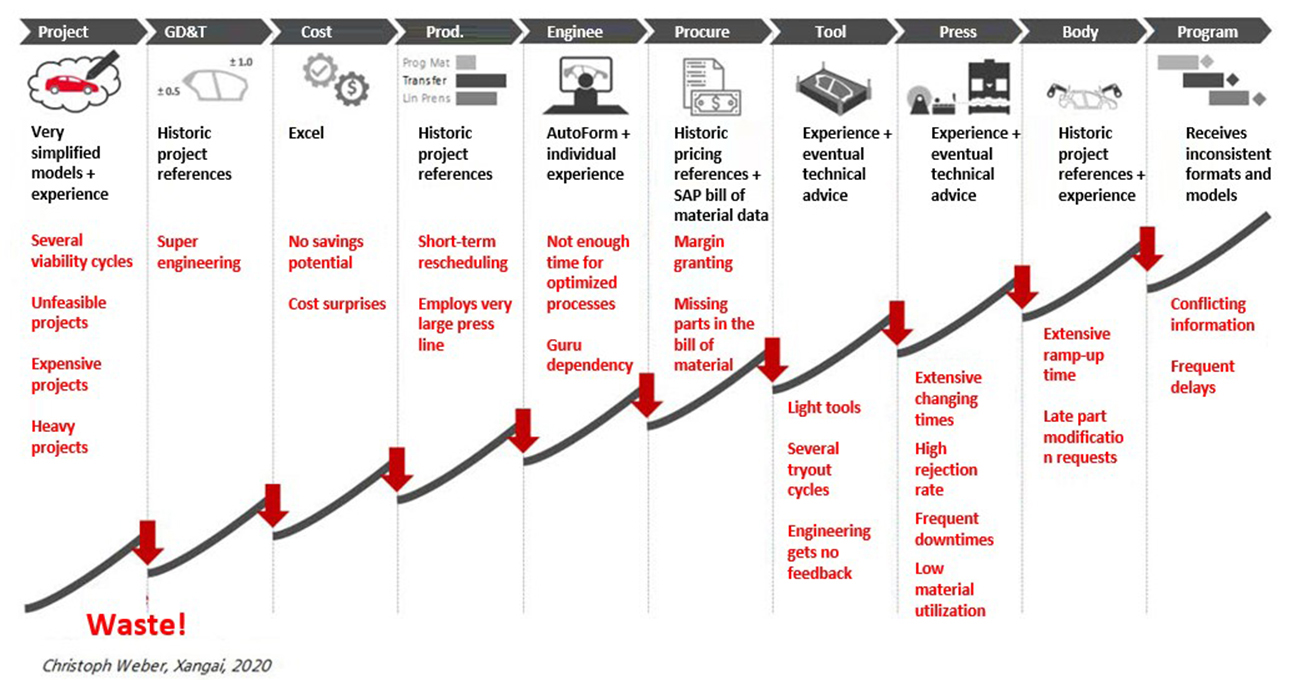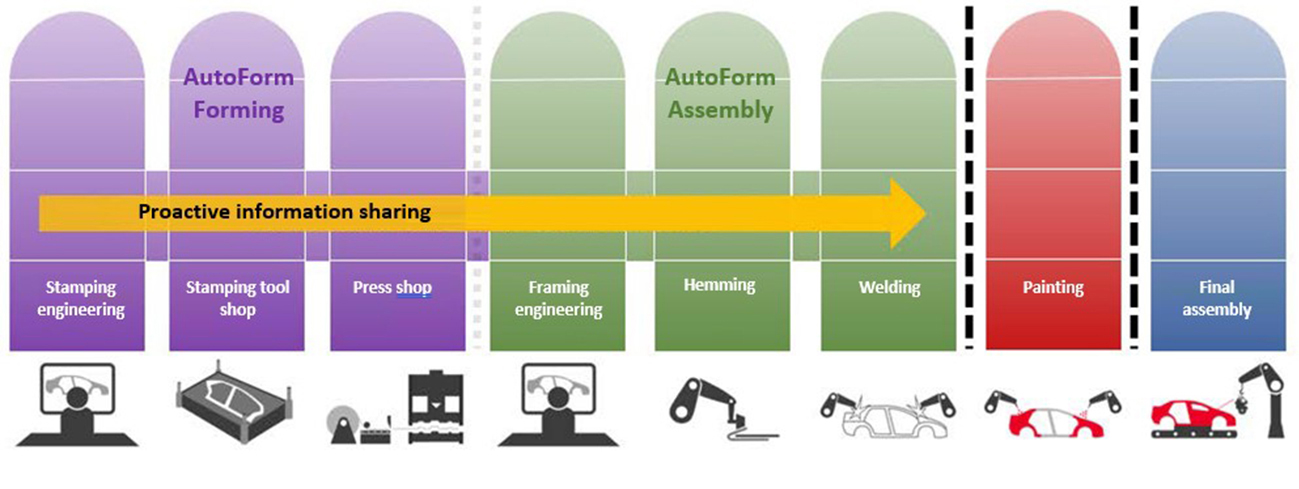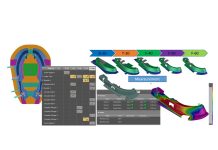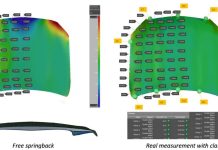The automotive industry has always been at the edge of technological development, challenging the status quo as for instance in Henry Ford’s feat that revolutionized the production system. Today it could not be any different:
In an effort to improve the processes, teams are working on advanced production models such as the Industry 4.0, where the aim is to create an organic system that integrates departments and production facilities, creating a clear and effective flow of information and tasks, as well as eliminate waste and reduce the carbon footprint.
In this context, to remain competitive, companies need to be connected to the ecosystem in order to adapt to the most modern trends, aiming to extract the maximum from their plants, with quality and low cost. However, to implement the changes, apart from overcoming the paradigms, it is necessary to analyze and adjust the methods and processes. For this reason, in order to optimize the implementation stage, digital tools are offered, which are valuable resources that enable the prediction of failures, more assertive decision making, and the elimination of the trial-and-error method.

To break paradigms is the most complex task of the transformation. The Fordist model created a system where departments and people execute their functions with the only objective of delivering their own result. And this operating model creates an individualistic and siloed thinking environment, as finishing your specific task is the most important thing, leading to convictions such as “my work has been done and I’m no longer responsible for it,” which brings some risks to the operations when considered in a global way.
For example, picture the final assembly of a vehicle: How many steps are necessary to fulfill this process? Many people, departments, and suppliers are involved, and among the multiple tasks performed, many of them are interconnected and depend on each other. As in the body framing process, in which the sheet metal parts depend on the press shop, which in turn depends on the tool shop. If each department works isolated, the tool shop will strive to deliver the best possible tool to the press shop, which in turn will deliver the best stamped part to the body framing, spending excessive and sometimes unnecessary efforts and therefore resulting in low effectiveness.
If each department always aims to successfully complete its objectives, will this be the most effective way? Were the processes cost-effective, and sufficient to ensure the best quality of the final product considering the chain as a whole? The tool that was delivered to the press shop was built thinking about the production life cycle of the vehicle? After all, the major percentage of the costs over the life of a product lies in the serial production, not just in approval events. Even if all stamped parts are delivered within tolerance, is that sufficient to ensure the assembly of all components and sub-components, free of rework and adjustment?
These are questions that should be answered in advance, by means of digital resources, even before any production facility is built. For this reason, it is important that the preparation of the Digital Twin of the Process – one of the branches of the Industry 4.0 – be carried out by the engineering teams, making it possible to foresee the impact and to guarantee the required deliverables between each department, aiming at the best final product at the lowest cost.

In this new context, the discussions between the different areas can already take place in the engineering phase, beginning with the definition of the product, which is connected to Manufacturing Engineering and both work together to make the product more feasible and less complex. A reduction of purchasing costs for stamping tools, hemming, and welding devices as well as minimizing eventual rework costs should also be realized.
Once this phase is finalized, Manufacturing Engineering connects with Development Engineering and they begin the study and definition of the processes with focus on the assembly and serial production of the vehicle, aiming at optimizing the operations and guaranteeing the production repeatability.
This can be obtained by the creation of production maps that will assist the stamping and hemming teams. It is important to note that the reference for development of the stamping tools will be the data provided by the final assembly analysis. To achieve the assemblies in the desired dimensions, and not just each single part, is the most important aspect to ensure the proper assembly of the complete vehicle.
Considering that this is the last engineering phase before the physical construction of the production facilities, the involvement of the shop floor teams is necessary and of great value, since they have broad knowledge and can aggregate very useful information for decision making. And on the shop floor, the specialists who were involved in the engineering phase, will know what was simulated and will therefore guide and build exactly as planned, minimizing divergences between the simulated and the real production. Even if deviations occur, there will be a communication channel and openness for direct feedback between the shop floor and engineering, a requirement of this process to improve the methodology by identifying any failures occurred.
Considering that the several potential failure conditions have already been identified and mitigated during the engineering phase, the tool shop should deliver parts for approval events with a higher level of quality and a shorter tryout time, ensuring the tooling integrity as intended. On the other hand, in the press shop, after the home tryout, due to the analyses conducted in the engineering phase, the stability and repeatability of the processes will also be guaranteed, since they were developed based on the results of simulations which considered variation, such as the material properties.
The Digital Twin concept can also be employed for body framing. In the same way as in the press shop, the forming processes of the single parts were simulated under different conditions, and so the first specimens met high quality levels with fewer adjustments, the assembly conditions can also be taken into consideration. The final aim of the press shop is to deliver parts that meet the dimensionality of the assembly, i.e., in the engineering phase it is possible to predict whether the dimensional deviations of individual parts negatively affect the dimensions of the assembly, or whether any of the parts would need to be deformed outside the nominal condition to ensure the dimensionality of the complete assembly. This saves unnecessary time and effort in the development of the stamping tools and ensures that the delivered parts allow the assembly of dimensionally correct assemblies with minimum adjustments. In addition, the simulation of the hemming process, for example, will allow the robot program to be executed exactly according to the path and inclination of the rolls defined in the software, parameters that have been optimized to meet the quality criteria of the assembly, reducing significantly the programming time and the tuning of the devices.
Transforming barriers into bridges is extremely important for manufacturing companies in general. Through the interactions between the departments, the reduction and elimination of waste can be guaranteed, broadening the possibilities of new business as there will be an increased demand for engineering followed by a significant reduction of effort in the plant, thus opening production windows for new products. For the implementation of this digital transformation there is software that can help the industry, such as AutoForm in the case of the stamped parts and assembly segment. At the blog formingworld.com you can find articles that show stories of their application around the world and the current trends in this market.
Wesley Aparecido da Silva – Application Engineer at AutoForm, holds more than 13 years of experience in the tooling industry, where he has worked in several activities in the areas of press shop, tool shop, process and development engineering. Material engineering student at the Universidade Federal do ABC. Currently he is responsible for the digital transformation of the industry in the application of sheet metal forming and hemmed and welded assemblies, as well as for software training and support.













